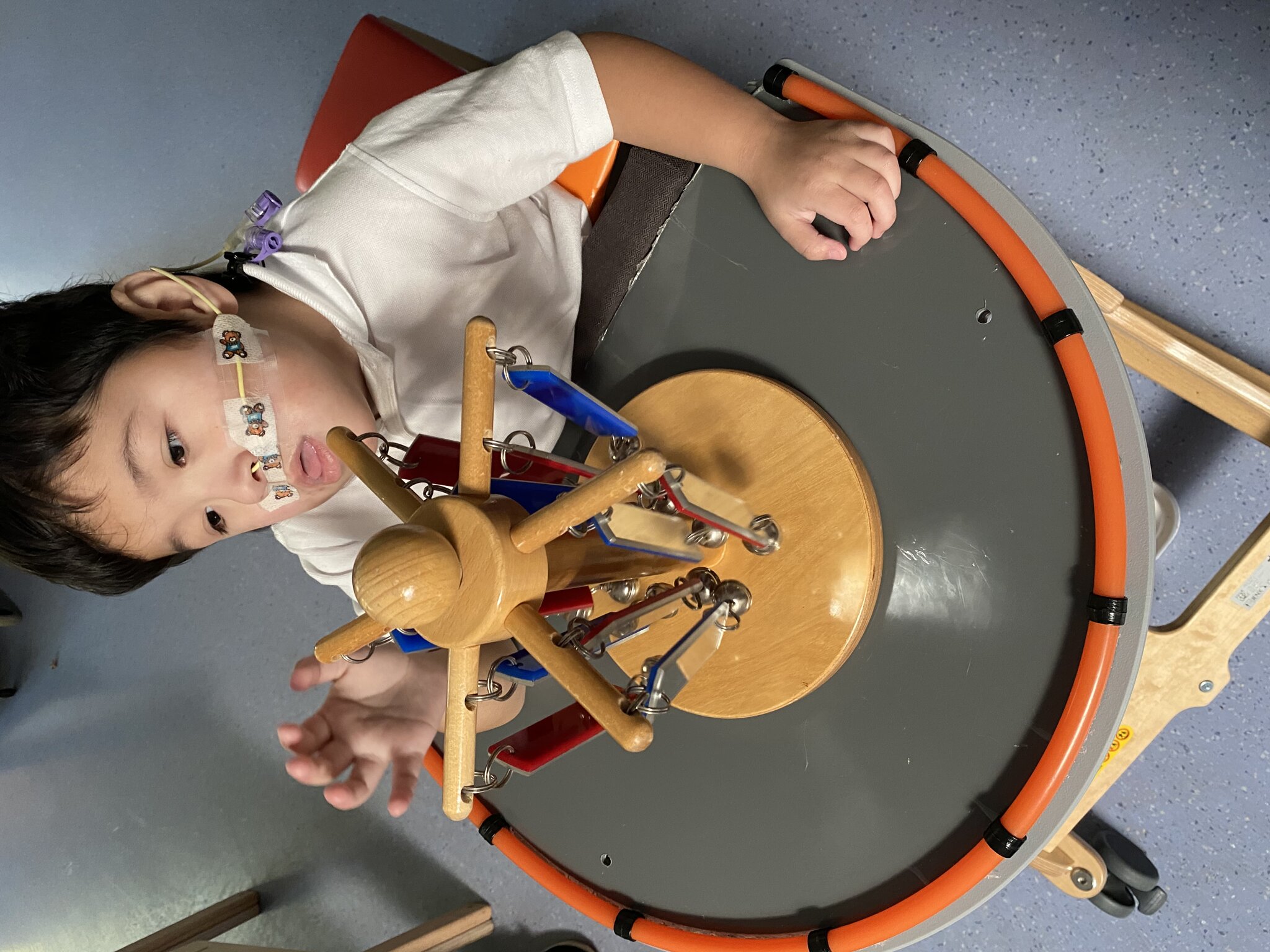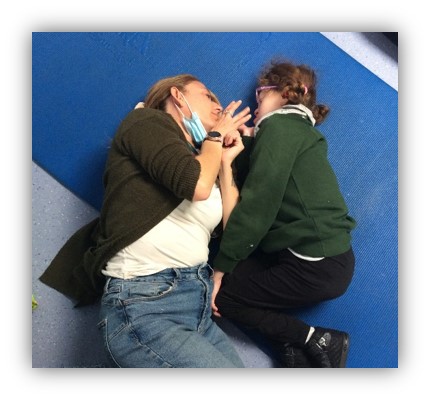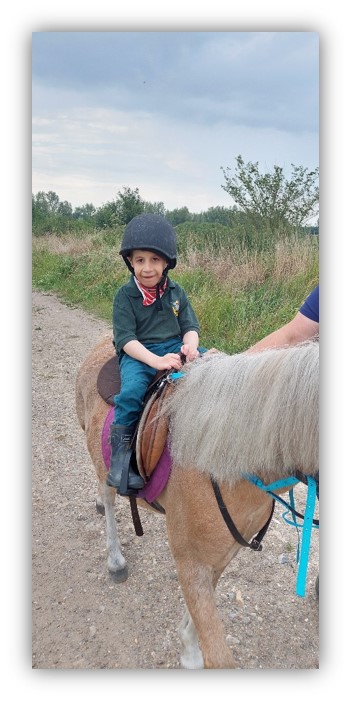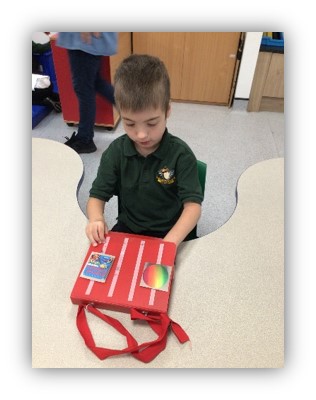Overview
Who is on the Blue Pathway?


Blue Pathway learners are working at an engagement level in most areas of their curriculum. They are not accessing subject-specific learning. Students working within this Pathway commonly present with the following characteristics:
-
Emerging intentional communication
-
Emerging social awareness
-
Emerging contextual awareness
-
Possible learnt responses to familiar routines
-
Beginning to develop joint attention

The Curriculum
Each student has individualised lesson outcomes for every lesson, based on their long term EHCP outcomes and "Routes for Learning" targets. The staff to student ratio is high, resulting in students’ learning being constantly and consistently tracked while also providing a high level of personal care. Both teachers and teaching assistants have an in-depth knowledge of students’ needs and intended learning outcomes and know how to encourage and support these learners in the best ways.
Lessons often take a sensory format, where we engage as many of the senses as possible. This may be by using particular music to create an experience, it may be to use scents, sounds and tastes to aid exploration or it may be to offer particular textures. For many of our learners, whole body awareness is a key priority, along with developing tools to aid communication such as making a choice or communicating a need.
We repeat lessons over at least one half-term to help our students anticipate what is happening and begin to initiate new ways to explore or play or move. By working collaboratively with our school therapy department, we ensure the physiotherapy needs of our students are met. Similarly, our liaison with other educational professionals and outside agencies help us to constantly review our working strategies and develop best practice.
We monitor the learning of our students lesson by lesson; this takes the form of observational notes and photographic evidence. Due to the nature of the complex learning needs these students have, linear level assessment does not always best show the steps of progress made. We track student progress and assess against their EHCP outcomes and "Routes for Learning" as an ongoing process. We feel it is important to celebrate the steps of progress our students make and communicate this regularly with parents/carers. We value home school communication and welcome parents/carers contributing to the learning outcomes of our students.
Exemplar Timetable
Blue Pathway Topics (5 year plan)
Therapies and interventions
Learners in the Blue Pathway have access to a wide variety of therapies and interventions. Some of these are:
Hydrotherapy
An aquatic therapy designed specifically to support a pupil’s physiotherapy needs. We have a heated hydrotherapy pool onsite. Hydrotherapy has proven to improve quality of life for pupils with respiratory conditions. 
Whole body awareness
This is a technique which helps students understand their own bodies and themselves in relation to others and wider contexts. Whole body awareness helps to develop self-awareness and promotes well-being.
Tac Pac
This a sensory communication resource using touch and music to help develop communication and social skills.
Intensive interaction
One to one interaction between learner and an attentive adult whereby the adult copies the sounds and movements of the learner. This encourages communication and shared attention.
Music Therapy
Music therapy utilises different musical styles, methods and instruments and allows learners to express themselves and engage with the outside world in a unique musical language. Learners access music therapy on a 1:1 basis or in small groups.
Rebound therapy
An exercise therapy, which uses trampolines to provide opportunities for movement, therapeutic exercise and recreation in addition to helping develop communication and social skills.
Attention Autism
This is an intervention model designed by Gina Davies, Specialist Speech and Language Therapist. It aims to develop natural and spontaneous communication with visually based and highly motivating activities. It also provides opportunities for helping learners to understand transitions.


AAC – Augmentative and Alternative Communication.
This encompasses Makaton, PECS, Communication books, visual supports, the use of switches, timetables, and social stories. We aim to have total communication classrooms.
Impact
We know through observation and assessment, from feedback from parents/carers and from FE and Social Enterprise providers that our Blue Pathway has the following impact:
- learners improve their engagement with the world around them. This may be observed as a new ability to anticipate an event, recognition of a familiar person or peers or in any number of other ways
- young people develop their receptive and expressive communication skills, again allowing them deeper engagement with others
- students develop physical and mental wellbeing and robustness through our ongoing therapies and interventions
- Pupils become more able to understand and accept support around them, preparing them for their life after Highfield
Moving on from the Blue Pathway
Outcomes for learners in the Blue Pathway vary according to the individual progress they make through the curriculum frameworks and against their EHCP outcomes. All students are able to leave with qualifications drawn from their studies within the areas of learning in the Blue Pathway. We use ASDAN Life Challenges as the qualifications base.
Learners are likely to stay on roll until the end of the year in which they are 19, unless there is an alternative placement that would better suit their needs. Accessing LINC 19 - 25 is an option that can be explored if the individual's needs could be best met there. Discussions on moving on begin from at least the year 9 annual review. Our Careers strategy on the school's website has more detail.
Other options are to move to a mix of social care funded settings, direct payment support to access the community and Learning Disability Partnership input to meet health and care needs. If the learner transitions to a social care funded package or placement, their EHCP ceases.
Please contact the Headteacher, Adam Daw at adaw@highfield.cambs.sch.uk if you would like any more details about the Blue Pathway.


